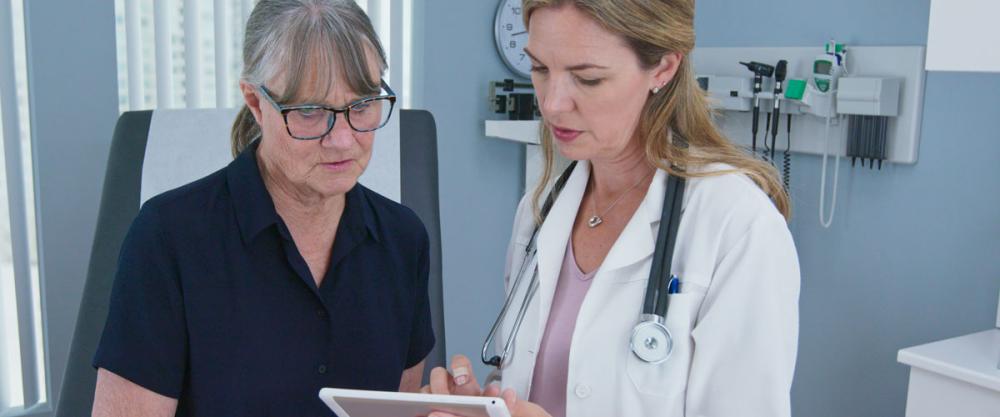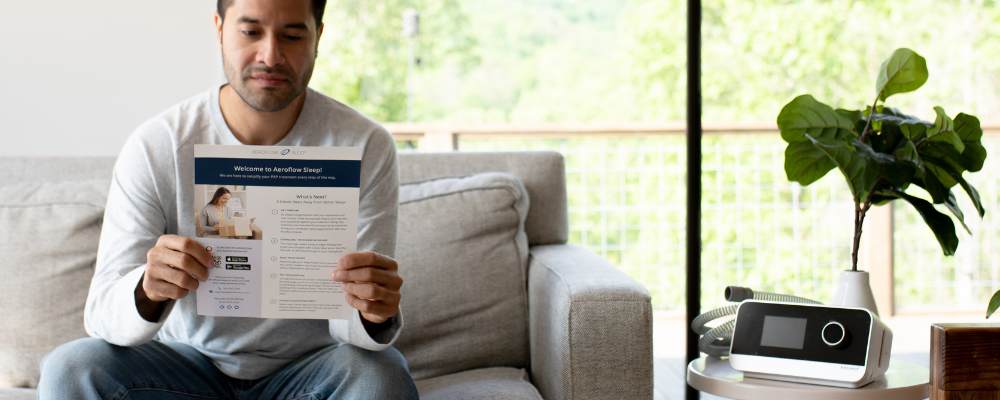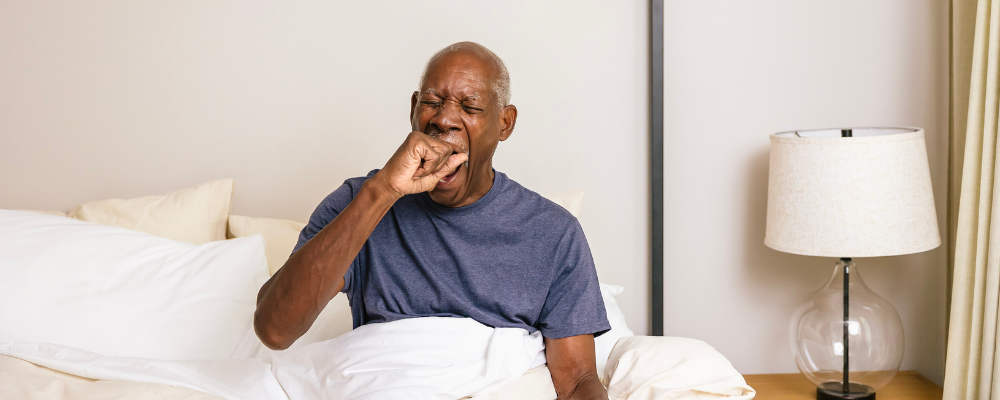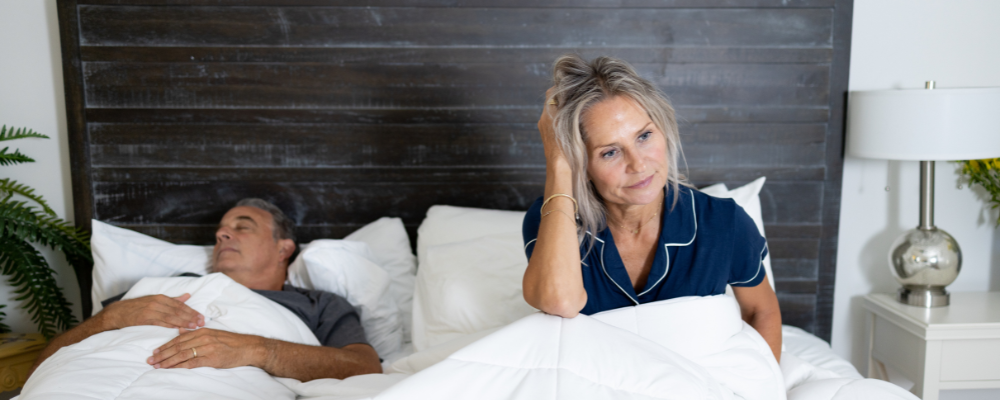Sleep apnea is a sleep disorder that many of us have heard about, but many of us are under the false impression that it only happens in men. In reality, research published more than 20 years ago—in the American Journal of Respiratory Care and Critical Care Medicine—proved that for every 3 men that have sleep apnea, 1 woman does too. So, why is our thinking behind the times, and women are still underdiagnosed?
Well, for every 9 men who are treated for sleep apnea, only 1 woman is. It’s much more difficult to diagnose a woman with sleep apnea, because they don’t present the same obvious symptoms as a man. However, as an aging woman, you have more changes occurring that can exhibit symptoms of sleep apnea, making it easier to detect in older women. Together, Aeroflow Sleep will help you become aware of the symptoms and common risk factors that ladies need to look out for, guaranteeing a better diagnosis.
IN THIS ARTICLE:
Obstructive Sleep Apnea Risk Factors
Why Age Matters Most When Diagnosing Women
Treating Your Symptoms Of Sleep Apnea
CPAP SUPPLIES THROUGH INSURANCE:
Aeroflow Sleep is in-network with most primary insurance companies and is accreditted by Medicare and Medicaid. Complete our Qualify Through Insurance Form, and we will automatically check to see if your plan covers CPAP supplies; including a machine, mask, and accessories. ***Must have a sleep study to qualify.***
You will also receive the care and attention every sleep apnea patient deserves; one-on-one clinical support in-home or via telehealth, a dedicated Sleep Specialist you can contact during business hours, and a user-friendly online portal with tailored replacement schedule, important updates and notifications, and educational resources.
Let us take the headache out of healthcare. Join the Aeroflow Sleep family today! It only takes 5-7 minutes to get started.
The 3 Types of Sleep Apnea
Whether you are a man or a woman, there are certain things everyone should be aware of when checking for sleep apnea; like how there are 3 types of sleep apnea: obstructive sleep apnea (OSA,) central sleep apnea (CSA,) or mixed sleep apnea. OSA happens when something is literally obstructing—maybe even closing off—your upper airway, while CSA is a neurological issue where the brain fails to send the signals that keep your throat muscles open to the throat. And, mixed is a combination of both. We’ll focus on OSA, since it’s the most common.
Obstructive Sleep Apnea Risk Factors
Next thing you should know is, like sleep apnea types, most OSA risk factors do not discriminate. They can include obesity, hypertension (or high blood pressure,) and cardiovascular disease. However, your assigned sex at birth can “assign” your upper airway size; men tend to have a larger neck circumference, and that girth puts pressure on the upper airway when lying down. A smaller neck circumference is just as severe, because the upper airway itself is proportionally smaller too, lending itself to obstructions more easily (and more likely, presenting in petite women.)
OSA Symptoms & Warning Signs
Finally, the warning signs of sleep apnea range from excessive daytime sleepiness to sudden awakenings, gasping for air. Many people notice loud snoring, many people feel fatigued, but women have a few select symptoms that present more often in females than males. For example, women are more prone to these symptoms than men are:
- Lethargy
- Insomnia
- Acid Reflux
- Depression & Anxiety
- Restless Leg Syndrome
- Being forgetful or clumsy
- Changes in Body Mass Index (BMI)
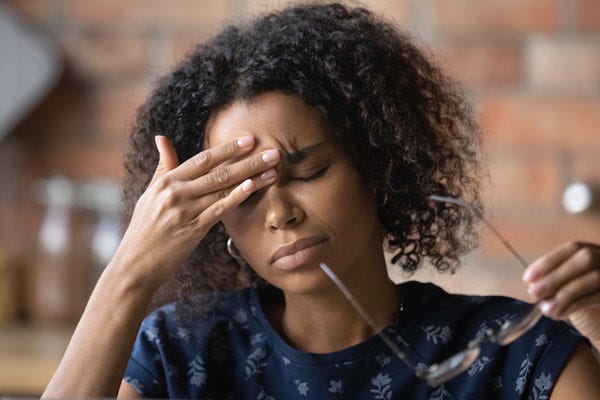

The problem with these warning signs is that any number of them can easily be mistaken for hormonal changes or other sleep disturbances; so much so, even the patient can’t tell the difference! For example, one study out of Brown University suggests “that nocturnal enuresis, or bedwetting, may be an additional symptom that doctors can look for when assessing post-menopausal women for obstructive sleep apnea.” This is why age matters a great deal when diagnosing a woman.
Why Age Matters Most When Diagnosing Women
As a woman, it is important that you take your health into your own hands and be informed about the possibility of having sleep apnea, so let’s break down the various stages of a woman’s life and when the prevalence for sleep apnea is at its highest….
Childbearing Years
You may be surprised to learn that some women have sleep apnea when pregnant. Remember how we talked about neck size earlier? During pregnancy, weight gain in the oropharyngeal region leads to narrowing of the airway, and therefore, reduced airflow. On the flip side, blood vessels become inflamed, causing upper airway tissues to swell and reducing oxygen levels.
If you’re thinking this will pass post-partum, think again; having the baby does not mean gestational OSA goes away. Sleep becomes even more elusive and more important to address after birth, plus weight loss and resetting hormone levels (especially progesterone) are crucial to improving your sleep-disordered breathing. Ask your OBGYN if you have questions.
Perimenopausal
Medical conditions with morning headaches (or any headache for that matter) are abundant, especially when you reach middle-age, but that’s another one of the most common symptoms of sleep apnea. Combine this with sleep disruptions and mood swings but no history of heart attack, heart disease, heart failure, high heart rate, you get the picture…anything heart related, and your sleep apnea is misdiagnosed as depression or insomnia.
Sleep apnea affects irritability, certainly, but it’s a side effect of tiredness; not being depressed. In this case, before you speak with your doctor about a sleep apnea diagnosis, ask your bed partner or family members if they’ve noticed anything that could be mental health-related.
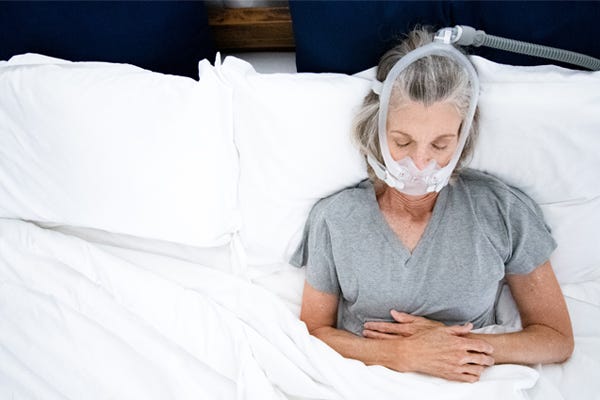

Menopausal & Beyond
When women are experiencing menopause, the symptoms are altogether dismissed. Yet, NIH disclosed, “20% of women develop OSA during menopause [and]...the decline of hormones pushes women more toward OSA.” The same article reveals that statistics increase 27-47% post-menopause, putting you at increased risk. Most women undergo menopause between ages 45-55, so know the difference between these two age groups and advocate for yourself!
The earlier sleep apnea is diagnosed, the better chance you have at living a longer, healthier life. All you need to do is tell your healthcare provider you would like a sleep study. So, if you do find yourself having reached postmenopause without having been tested, there are resources available...
Treating Your Symptoms of Sleep Apnea
Anyone who believes they have sleep apnea should schedule an appointment with their physician. Your doctor can order that overnight sleep apnea test to diagnose you, in-home or in a lab. They will be able to tell which of the 3 types you have and the severity of your sleep apnea; they do this by measuring your Apnea Hypopnea Index (AHI) or how often you stop breathing in an hour.
If you are diagnosed, the next step will be to find a trustworthy and reliable company that specializes in sleep apnea treatment options, especially continuous positive airway pressure (CPAP) therapy; like Aeroflow Sleep! Our knowledgeable customer service agents will speak with your insurance company, navigating all of the complicated requirements and paperwork for your convenience.
Then, we help determine the best type of CPAP machine and mask for you. For example, if you are claustrophobic and don’t like the idea of having a mask over your face, we can chat about alternatives; like a nasal pillows mask. We’ll even review sleep medicine options with your doctor that only require CPAP for a short time; like surgery.
Did we mention that you’ll get your PAP supplies covered up to 100% too? Aeroflow Sleep is in-network with most primary insurance providers; including Aetna, Blue Cross Blue Shield, Cigna, Humana, and United. We’re also accredited by Medicare and Medicaid. So, call a dedicated Sleep Specialist today to get the process started, at 1-800-480-5491, or email us at info@aeroflowsleep.com.
We will be with you every step of the way to ensure you are comfortable and educated on all of your different options! Best of all, we’ll help you get a full night’s sleep.
Resources
Bixler EO;Vgontzas AN;Lin HM;Ten Have T;Rein J;Vela-Bueno A;Kales A; (n.d.). Prevalence of sleep-disordered breathing in women: Effects of gender. American journal of respiratory and critical care medicine. Retrieved April 14, 2023, from https://pubmed.ncbi.nlm.nih.gov/11254512/
Mayo Foundation for Medical Education and Research. (2023, April 6). Sleep apnea. Mayo Clinic. Retrieved April 14, 2023, from https://www.mayoclinic.org/diseases-conditions/sleep-apnea/symptoms-causes/syc-20377631
Jehan, S., Auguste, E., Zizi, F., Pandi-Perumal, S. R., Gupta, R., Attarian, H., Jean-Louis, G., & McFarlane, S. I. (2016, August 25). Obstructive sleep apnea: Women's perspective. Journal of sleep medicine and disorders. Retrieved April 14, 2023, from https://www.ncbi.nlm.nih.gov/pmc/articles/PMC5323064/
Koo, Patrick MD; McCool, F. Dennis MD; Hale, Lauren PhD; Stone, Katie PhD; Eaton, Charles B. MD, MS. (2016, February). Association of obstructive sleep apnea risk factors with nocturnal enuresis in postmenopausal women. LWW. Retrieved April 14, 2023, from https://journals.lww.com/menopausejournal/Abstract/2016/02000/Association_of_obstructive_sleep_apnea_risk.11.aspx


